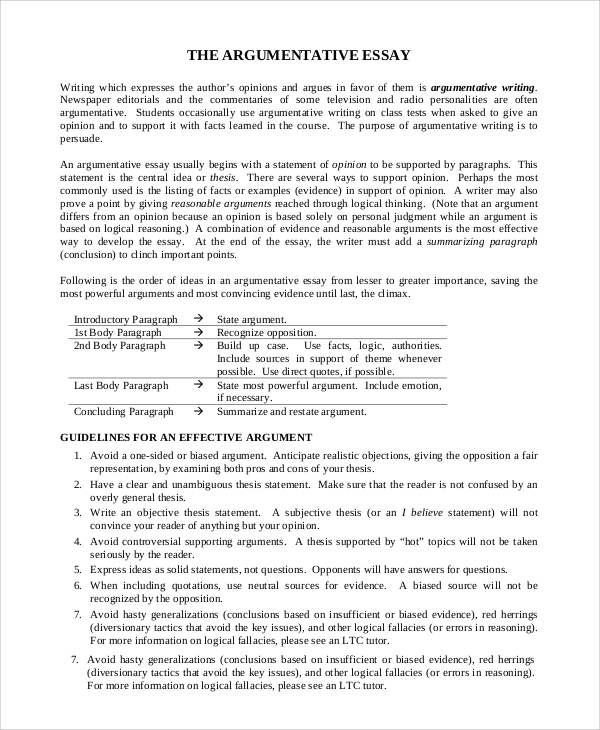You have probably heard that the best way to win an argument essay is to present an argument on both sides of an issue. But how do you actually write one? This article will provide you with an overview of the basic structure of an Argumentative essay. We will also go over what is considered “Evidence” and what is called a Counterargument. We will also talk about how to develop a strong Thesis statement.
Argumentative essay structure
The basic structure of an argumentative essay is to present an argument and defend it against a counter-argument. The body part of an argumentative essay should be composed of two to three paragraphs presenting a new point of view. Lastly, the conclusion part of the essay should restate the thesis statement. To make the argumentative essay structure more effective, students can use the classical way of structuring the paper. Here are some tips to make the writing process easier.
An effective outline is an essential part of writing an argumentative essay. An outline is a brief plan that contains a few key arguments but not all. Creating a detailed outline helps you save time during the writing process. Generally, the body of the essay contains two or three arguments. The final paragraph is a support or counter argument that supports the thesis statement. An essay with opposing arguments shows that the author is able to make objective judgments about a subject.
Counterarguments
When preparing your counterargument, you should first make sure that you are knowledgeable about the topic. You can find an argument essay subject that interests you and is also unbiased, and then start researching. If you’re stuck, consider rewriting the essay to support your counterargument. This way, readers will see that you’re unbiased and not biased. Your counterargument will be stronger, and they’ll have more information to counter the argument.
When writing your counterargument, don’t try to refute every point that the other side made. You should only offer support for your own argument if your counterargument is stronger. However, it’s important to include some counterarguments to give your argument more credibility. In addition, you should try to write your counterargument with objectivity and a scholarly tone.
Thesis statement
A strong argument begins with a well-defined thesis statement. The statement should be effective and state the main characteristics of the subject matter. Some examples of strong thesis statements are: a bill to reduce prison sentences for non-white criminal defendants is good for society; the internet facilitates the exchange of ideas, and students should be shot for cheating on tests. Other examples include: the importance of spaying or neutering pets; cheating on income taxes is bad; and the Internet allows students to learn facts from anywhere.
Regardless of the topic of your paper, a strong thesis statement will help direct your audience. It should be as brief as possible and relate directly to the argument of your paper. It should also use proper diction and avoid using large, vague words that may confuse the reader. Finally, a good thesis statement should be assertive and not flowery. It is a good idea to brainstorm a few ideas before writing a thesis statement, so that you can come up with the best one.
Evidence
An argument essay can use many different types of evidence. Facts, statistics, stories, examples, and testimony from experts can be effective in illustrating your reasoning. As with any piece of writing, evidence should be introduced and linked back to the central argument. Regardless of what type of evidence you choose, it’s vital to be specific and cite the source of your information. Here are some tips for using evidence in your argument essay.
o Use quotations. Quotations are a good choice to support a claim because they let readers know that the author was thinking about the topic before they made the claim. Be sure to integrate them smoothly into the text, so they don’t become distracting. If possible, quote other people’s words and explain how they contributed to the argument. This will show the reader your thought process and show them why their words or claims matter.

